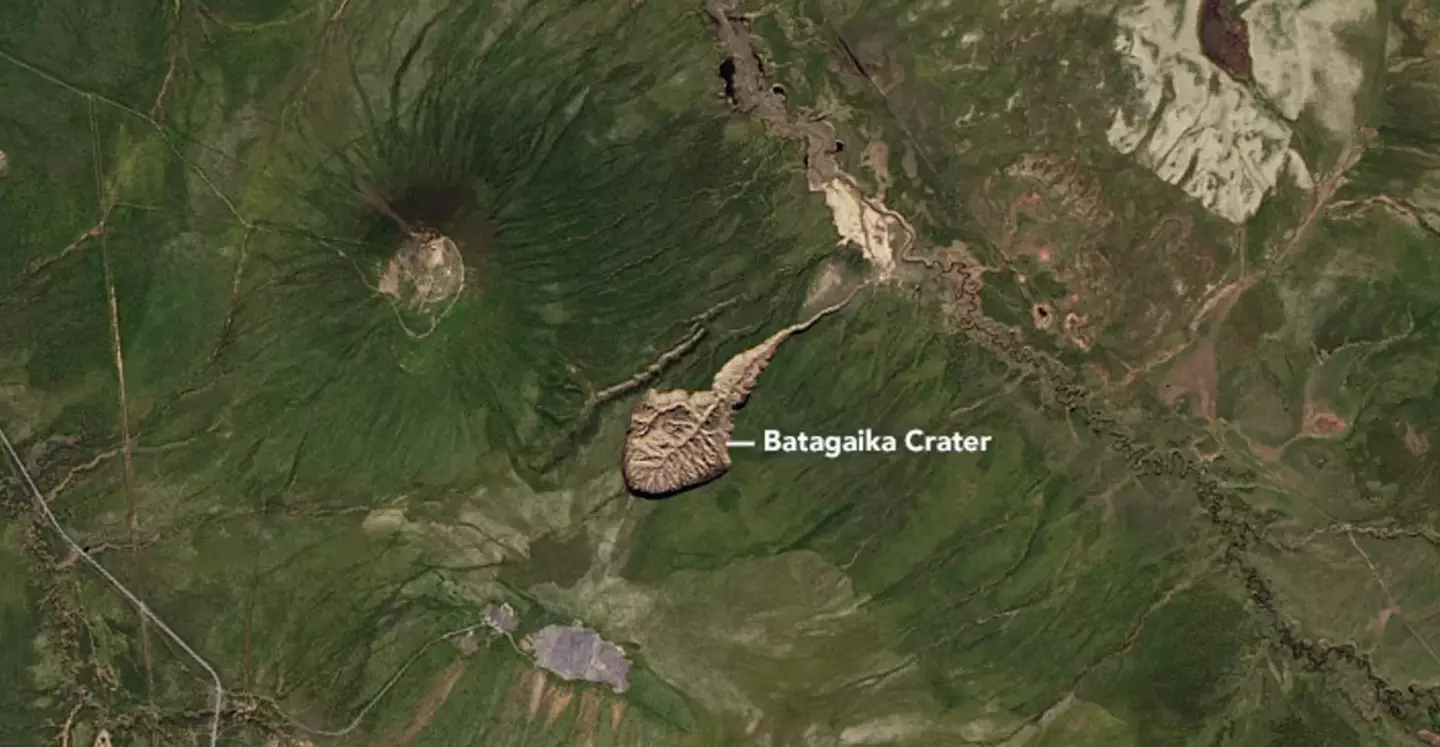The Batagay Crater, known to locals as the ‘Gateway to Hell’, is growing by a staggering amount each year
A so-called ‘Gateway to Hell’ is growing at a concerning amount.
Located in Siberia, the gateway – officially known as The Batagay megaslump – the crater is said to be the largest of its kind in the globe.
The megaslump was first discovered in 1991 via satellite images a section of hillside collapsed in the Yana Uplands of northern Yakutia in Russia.

The Batagay crater is located in northern Yakutia, Russia (NASA Earth Observatory)
It’s believed to have started forming in the 1960s and was described as ‘tadpole-shaped’.
But the Batagay megaslump has since changed shape in light of it growing bigger and bigger each year.
In a study released in May, it was reported that the huge crater has grown by 35 million cubic feet (around one million cubic meters every year).
In fact, in 2023 alone, the ‘Gateway to Hell’ stretched to 3,250 feet (990 m) wide, Live Science reports.
In comparison, the megaslump measured 2,600 feet (790 m) wide in 2014.
As to why it was first created and why it’s still growing, it probably won’t come as a surprise to you that it’s climate change-related.
The Batagay megaslump is the result of increasing temperatures which is melting permafrost (the frozen soil and rock that makes up the bulk of the Arctic landscape) in areas like Siberia.
As this permafrost melts because of the globe’s increasing temperatures, the Earth loosens and slumps.
But what’s the big deal about permafrost melting, I hear you ask? Well, not only does the process of it melting cause more land to collapse, it also releases more greenhouse gases.
“About 4000 to 5000 tons of previously permafrost-locked organic carbon is released every year,” the study reveals.
65 per cent of the ground in Russia is comprised of permafrost, so the increased thawing could prove particular problematic there.
.jpg)
About 65% of the Russian territory is underlain by permafrost (imageBROKER/Florian Bachmeier)
With global warming sadly not going away anytime soon, scientists predict that even more craters like the Batagay megaslump will worsen.
Professor Julian Murton, a geologist at the University of Sussex, previously explained to The Independent: “As the climate warms – I think there’s no shadow of a doubt it will warm – we will get increasing thaw of the permafrost and increasingly development of these ‘thermokarst’ features. There will be more slumps and more gullying, more erosion of the land surface.”
Murton added that the Batagay crater will ‘provide a view to what has happened in the past and what is likely to happen in the future’.





